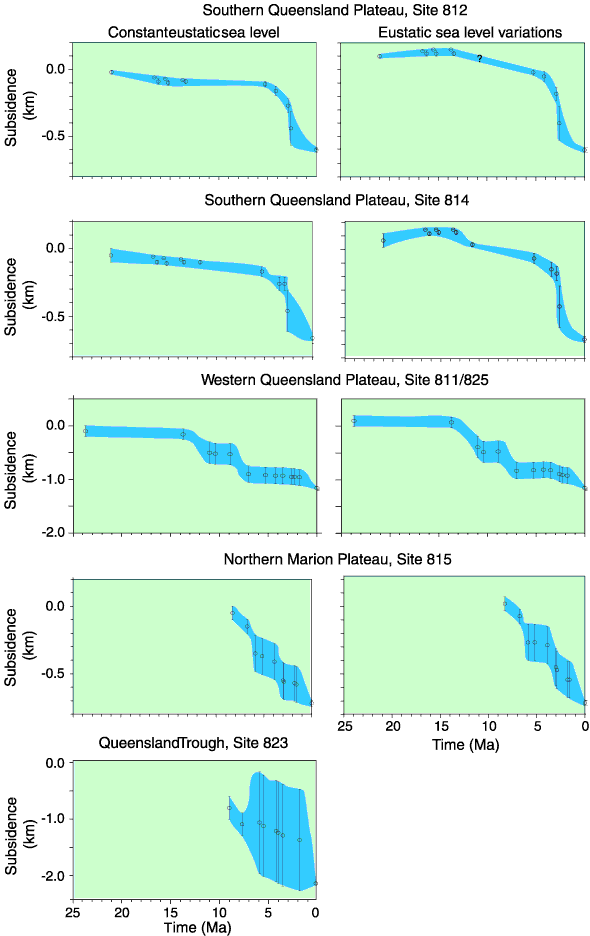Figure F4. Water-loaded tectonic subsidence (i.e., with the isostatic sediment load removed) for ODP Leg 133 Sites 812, 814, 811/825, 815, and 823, assuming constant eustatic sea level (shown on left) and using eustatic sea level variations of Haq et al. (1987) (shown on right). The latter is not shown for Site 823, as the errors in water depth (vertical error bars) are much larger than eustatic sea level variations. Shading around error bars indicates the area in which the true subsidence curve should occur. Comparisons between constant and varying eustatic sea levels allow evaluation of the potential effect of eustatic variations on tectonic subsidence models. For instance, the first model (left) for Site 814 shows a gently subsiding platform until about 5 Ma, whereas the second model (right), including eustasy, shows a tectonic subsidence pulse between 14 and 12 Ma. Therefore, the latter may be entirely due to the input of an ill-constrained eustatic sea level curve.
